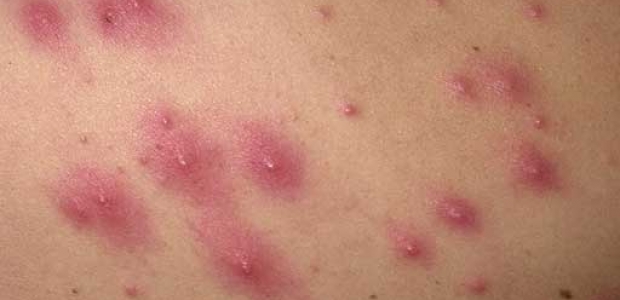Folliculitis Treatment, Symptoms, Causes, Remedy
13/01/2014 14:43Fulical
Hair grows out of pouch shaped structure called follicle. Infection of these follicles is called folliculitis. It appears like a pin point red spots on the skin. Most common site is chest, back, buttock and legs. It is an inflammatory condition characterized by small area of pus surrounding the follicular opening. Fulical is the herbal product which is found very effective for the treatment of folliculitis.
Folliculitis causes and types: There are several different folliculitis causes and types and can be divided into two prominent sub classes that is infectious and non infectious. The infectious type includes bacterial, fungal and viral with staphylococcus aureus, pseudomonas aeruginosa, fungus T. ruburm, yeast and herpes simplex virus causing sycosis vulgaris, hot-tub folliculitis, tinea barbae, pityrosporum folliculitisn and herpetic folliculitis respectively. These infectious folliculitis starts when hair follicles get damaged by friction, from clothing or an insect bite, if follicles are blocked, by shaving or by too tight braids too close to the scalp. After prolong antibiotic acne treatment, gram-negative folliculitis may appear.
Non infectious includes pseudofolliculitis barbae occuring due to hair curving back causing inflammation. Person with impaired immune system may develop eosinophilic folliculitis. In folliculitis decalvans several hairs arise from same hair follicle, the etiology of this problem is unknown. Due to exposure to various types of oils oil folliculitis may occur, usually on forearms and thighs. Recalcitrant cases of folliculitis may represent malignancy.
Folliculitis symptoms: It can manifest in many forms such as reddened skin area called rash, pimples or pustules which are located around hair follicle and may crust over present typically on neck, armpit and groin area. It may appear in the form of genital lesions. Skin itching is another one of folliculitis symptoms which can spread due to improper treatment.
Treatment of folliculitis: self treatment of folliculitis, caused by mild bacteria, can be done. It includes use of antibacterial wash like benzoyl peroxide, chlorhexidine or phisoderm, twice a day. Other than this soaking affected area in a tub of diluted white vinegar or in very dilute Clorox bleach can help reverse the condition. Bacterial folliculitis, with the recommendation of doctor can be treated by topical antibiotic application such as clindamycin lotion or metronidazole lotion. For more resistant form of infection a 5-30 day course of oral antibiotic such as cephalexin, dicloxacillin, doxycycline, minocycline, tetracycline, ciprofloxacin or levofloxacin may be used.
Treatment of fungual folliculitis with anti fungal shampoos and body washes such as ketoconazole. More resistant infection may require topical application of antifungal creams such as miconazole, terbinafine. 4% hydroquinone, kojic acid and 15-20% azelaic acids are recommended for the treatment of hyper pigmentation of skin.
Complications of folliculitis: Although it is a self limiting condition but it can sometimes lead to abscess, painful cysts or cellulites. Another possible complication of folliculitis is post inflammatory hypo pigmentation.
Folliculitis prevention: folliculitis prevention can be easily done by taking following measures: maintaining good skin hygiene, avoiding unsanitary hot tubs and pools, avoiding sharing of razors, avoiding shaving too closely, regularly replacing razors and keeping the skin well hydrated and moist.

